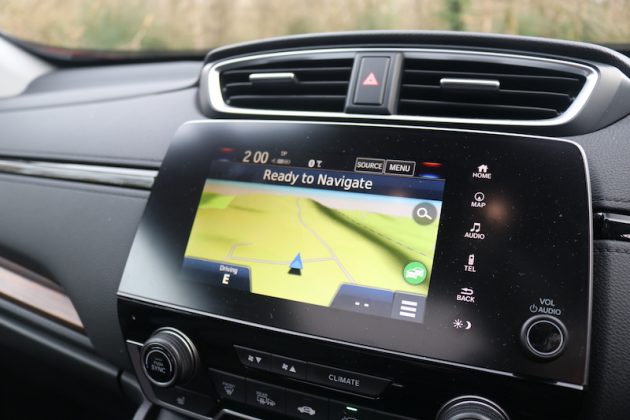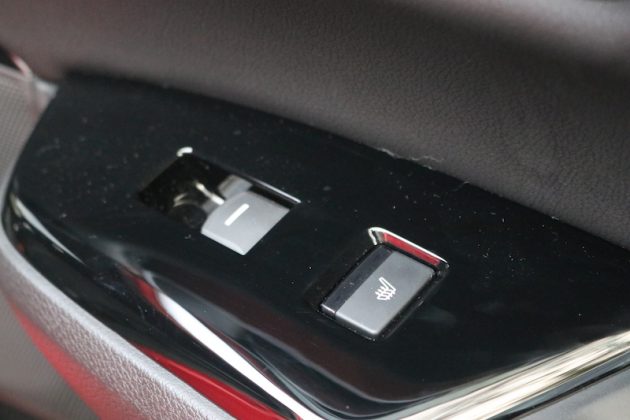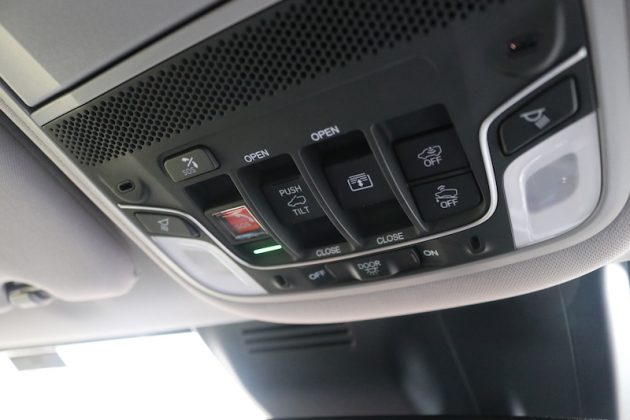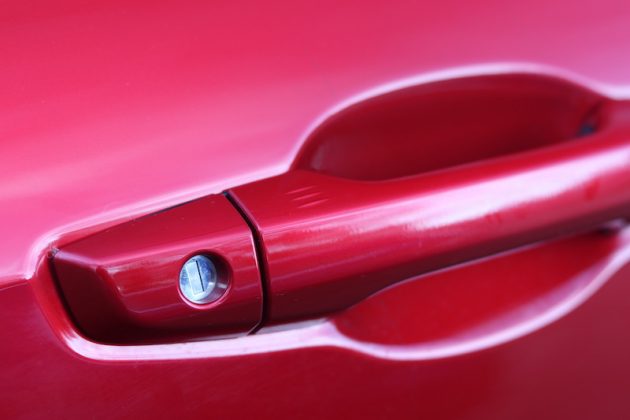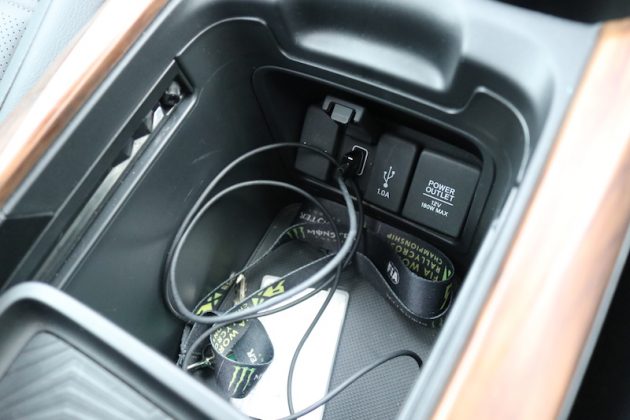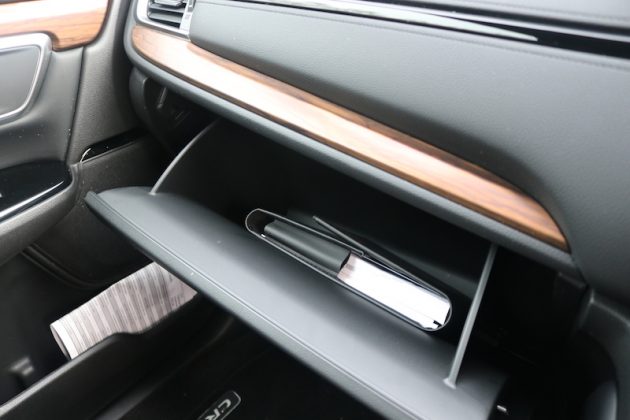Think of a popular SUV, and there’s a good chance the Nissan Qashqai will come to mind. After all, this is the car that pretty much kicked off the recent SUV craze. However, the car reviewed here was around long before the Qashqai, and has been in production over double the time the Nissan has. That car, is of course, the Honda CR-V.
How much is it?
Let’s start by talking about the price. There are four trim levels available; S, SE, SR and EX. The S starts from £25,995, offering features such as 17″ alloys, LED front and rear lights, Bluetooth, DAB radio, front and rear electric windows, air conditioning, automatic lights, and high beam assist.
SE starts from £27,855, adding features such as 18″ alloys, leather steering wheel and gearknob, dual zone climate control, front and rear parking sensors, 7″ Honda Connect infotainment system with smartphone connectivity.
SR starts from £31,745, adding features such as leather seats, privacy glass, rear view camera, active cornering lights, navigation and heated front seats. That of course leaves the range-topping EX, the car on test here, which starts from £34,455, adding features such as panoramic roof, heated outer rear seats, 19″ alloys, 8-way electronically adjustable driver’s seat, head up display, heated steering wheel, and a power tailgate.
The model on test here is actually £37,005, because it has the CVT gearbox, and it also has the optional Premium Crystal Red Metallic paintwork, which looks fantastic. Mind you, I think that is a fair bit of money for a Honda SUV, so perhaps the SE or the SR could be the better choice.
Watch: Honda CR-V EX Walkaround
That’s the price out the way, is it any good to drive?
If you’re looking for an SUV with a raft of different engine choices then you’ll need to look elsewhere – the same goes for if you are looking for a diesel. At present, there is just one engine available, which is a 1.5 litre four cylinder turbocharged petrol. In this car it’s mated to a CVT gearbox and all wheel drive, producing 193hp and 243Nm of torque.

Before I continue, let me briefly explain what a CVT gearbox is for those of you unfamiliar with the term. CVT stands for Continuously Variable Transmission, and it’s a single-speed automatic gearbox that does not have gears like a traditional torque converter or a dual clutch unit. The advantage of this type of gearbox is lighter, easier to construct, has less moving parts, smoother gearchanges and it offers better fuel economy.

This all sounds great, but there are some downsides. For example, they can cost a small fortune to repair if they go wrong, although this is a Honda, so it should be pretty bulletproof; plus they are known to be noisy, and you may find a CVT difficult to get used to. What do I think of the CVT? Well, I’m not a massive fan of it.
It feels like it’s getting in the way of the engine’s performance, it feels a bit slow and it causes the revs to flair before settling down once you are cruising. There is a Sport mode available, but that doesn’t make a great deal of difference. Thankfully, you do have paddles on the steering wheel which allow you to change “gears” of which, there are seven.

You can go for a 6-speed manual if you prefer, which I would rather have, but you will lose a bit of performance as the power drops down to 173hp and 220Nm of torque. There is a 2.0 litre hybrid engine on the horizon, which will produce 145hp and 175Nm. That engine is yet to arrive though, so let’s remain focused on the 1.5 litre, shall we?
Performance stats for a car like this almost feel a bit redundant to state, but in case you are wondering how fast this slab of Japanese practicality will get to here are the figures. It’ll hit 62mph in 10 seconds dead and it will continue to a top speed of 124mph. Despite the manual variant offering less power, you will have a slightly faster car, especially if you go for the front wheel drive variant, as it weighs less thanks to the lack of CVT and all wheel drive system.
Does it handle well?
However, it doesn’t take you long to realise that this is not an SUV set up for a sporty drive. The ride, although it does have a bit of a firm edge to it sometimes, is set up more for comfort than dynamism, and offers a good level of damping. The downside is that I’ve found the ride to be quite choppy on some roads, causing the car to feel a little boat-like.
Then, when you tackle a corner, you’ll find the car will be all to happy to roll and the handling sensation feels rather floaty. The braking power is good, but the grip isn’t amazing, the steering feels vague on the initial turn in and you don’t need to push it too hard to induce understeer. It’s a big, heavy car, and you can certainly feel it in the corners.

In summary, it feels like you have to drag the car around a bit, like a bored child reluctantly being taken around a supermarket. To be fair to Honda, the CR-V has not been designed to be the last word in dynamism, it’s designed to be a practical and spacious car for everyday family life.
Practical and spacious
This is where the CR-V comes in to its own as it may as well be a warehouse on wheels, thanks to the amount of space it has. There’s plenty of space to be had in the front, and there are more cubby holes than you could ever desire. Getting a good driving position is as easy as 1, 2, 3, thanks to a steering wheel with rake and reach adjustment, and a driver’s seat that electronically adjustable with two memory functions. It’s also heated along with the front passenger and rear outer seats, which is lovely for this time of year.
Thanks to the longer wheelbase compared to the previous generation CR-V space in the back is most definitely ample. Even when the driver’s seat is set for my 6’2″ frame I have acres of legroom on offer. So much so, I’d probably have enough room for a spot of tap dancing.
What’s better still is there is also good amount of headroom, even though this model is fitted with a panoramic roof, which can often eat in to headroom. Granted, the middle seat has got less headroom as the base is perched a little higher, but the transmission tunnel is minimal, which is handy, and I reckon you should be able to get three adults in the back pretty easily. Actually, I did that last weekend, and I had no major complaints. The CR-V can also be bought as a seven-seater, but only if you go for the SE and SR trim levels.
Now it’s not all perfect. The new CR-V has actually got a smaller boot than before. Instead of offering 589 litres, it offers just 561 litres. I know, it’s rubbish isn’t it? Joking aside, it’s still comfortably bigger than the Nissan Qashqai and the Peugeot 3008, but it’s not as big as the Volkswagen Tiguan or the Skoda Kodiaq.
If you need more space, you can of course fold down the 60/40 rear seats to give you an impressive 1,638 litres – or 1,756 litres if you don’t select the EX due to panoramic roof. What’s better still is the seats fold flat giving you better practicality, and, because I’ve got the range topping EX model, there’s a power tailgate as standard. Dead handy. The boot floor is also adjustable to offer better versatility.
How much does it cost to run?
This is where the CR-V stumbles up a bit, especially as it now lacks a diesel engine. You do of course have the forthcoming 2.0 litre hybrid, which offers 40.9mpg on a combined run, which let’s be honest, is pretty average.
However, it’s better than what this 1.5 litre turbocharge petrol is able to offer me. On a combined run it should offer 39.8mpg, although it’s worth noting that’s using the NEDC method, with the new WLTP method, the combined run is 31.7mpg. In my experience I was getting low 30s, so it’s good to see that the WLTP way of testing is more accurate, but then again, that’s the whole point of it.

In regard to CO2, this powertrain emits 162g/km, meaning for the first year of VED you’ll be required to £515. It’s safe to say that the CR-V isn’t the most efficient car in its class, but the situation does improve if you go for the manual as it offers 38.2mpg using the WLTP method, and it emits 143g/km, meaning you’ll pay a more agreeable £215.
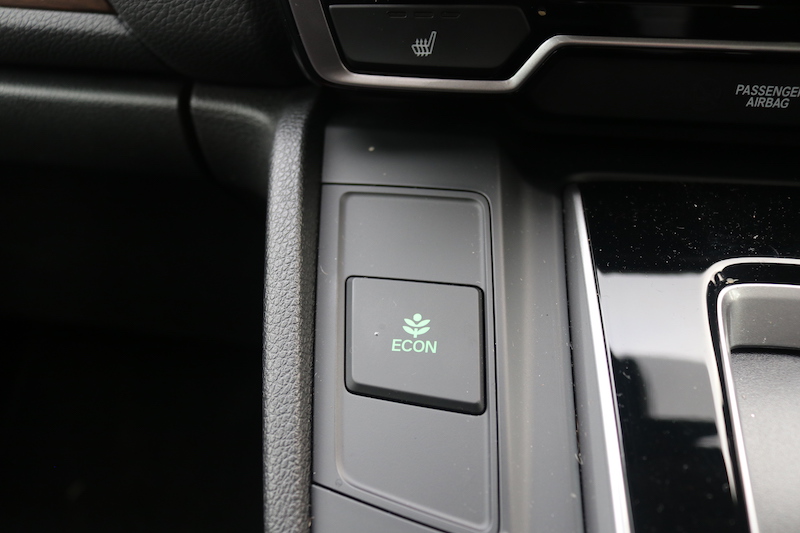
It may not be the most fuel efficient car in its class, but it shouldn’t cost you too much to run the car away from the petrol the pumps as it should be as reliable as clockwork, thanks to Honda’s high levels of reliability. Look after the car and it should you look after you for quite some time.
Is it safe?
It should be a safe car as well, thanks to features such as six airbags, autonomous emergency braking, lane departure warning, lane keep assist, speed limiter and adaptive cruise control. The reason why I say “should be a safe car” is because at the time of filming the CR-V is yet to be crash tested by Euro NCAP, but I’d be surprised if it’s not a 5 star rating. The EX adds to the safety front by adding blind spot assist and low speed following.

What about refinement?
Before I wrap up, let me touch upon refinement as this could be an important area if you plan to drive the car on a long trip. This is an area where the CR-V puts up a good fight. Yes, there is a bit of road noise from the 19″ alloys, but it’s far from intrusive and wind noise is well controlled. The engine isn’t afraid to be vocal when you want to build up speed, but once you’re at a cruising speed the engine fades away in the background quite nicely.

Final thoughts
The Honda CR-V may not be the most exhilarating SUV to drive, but I imagine that won’t matter a jot to buyers as it makes up for it in other areas. It offers plenty of space, practicality, equipment and safety, plus it’s a Honda, so it should be as reliable as clockwork. My only real gripes with it is the clunky infotainment system and the poor fuel economy. The CR-V then, is like a sensible pair of trousers; it’s practical, reliable, and dependable, but if you’re looking for excitement you might want to look elsewhere.

Car Obsession Rating:  (4 / 5)
(4 / 5)
Pros:
- Comfortable
- Spacious
- Practical, thoughtful design
- Good level of kit and safety equipment
- Should offer a high level of reliability
- Relaxed driving sensation
Cons:
- CVT gearbox can be an annoyance
- The infotainment system is far from intuitive or modern
- Handling leaves a fair bit to be desired
- Poor fuel economy
- Interior wood effect trim looks out of place
Rivals
 Nissan Qashqai
Nissan Qashqai
The Qashqai is a fan’s favourite when it comes to the SUV/Crossover world, but it simply cannot match the CR-V for space or practicality. However, it’s cheaper to buy, offers better looks in my opinion, and it’s also a better car to drive.
 Peugeot 3008
Peugeot 3008
The 3008 was able to bag the coveted European Car of the Year award, and when I reviewed it I could definitely see how. This is an SUV that offers a good amount of space, technology and safety, mixed in with the very stylish design inside and out. The 3008, like the CR-V, also offers a comfortable driving sensation, but at the price of less dynamism.
 Skoda Kodiaq
Skoda Kodiaq
Like the CR-V, the Kodiaq is a practical family SUV that also has had a lot of thought put in to its design. It also the offers the options of seven seats, but it has a larger boot, a nicer interior and it has a better choice of engines. The downside is that it will cost you more to buy.
















